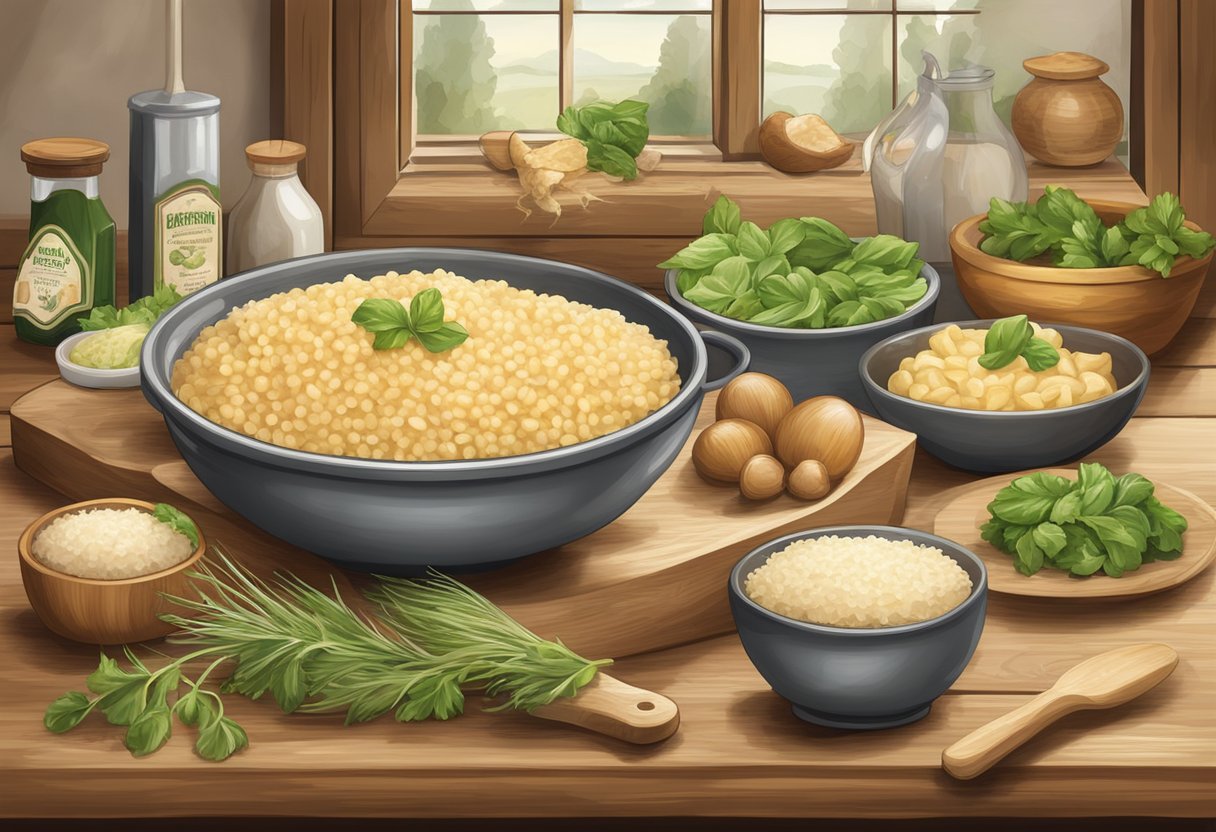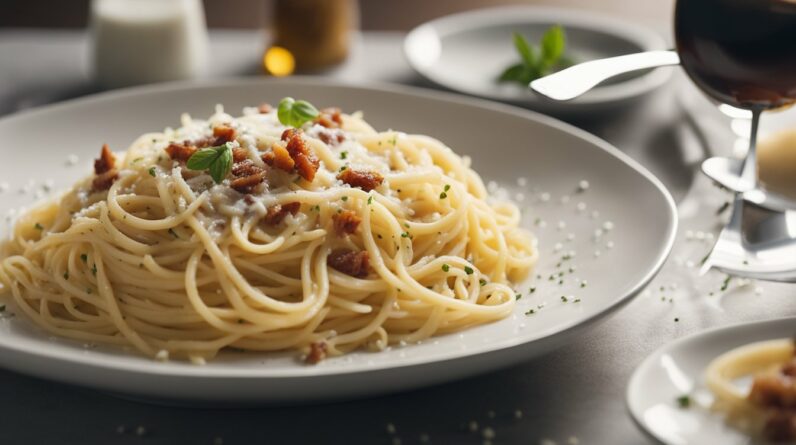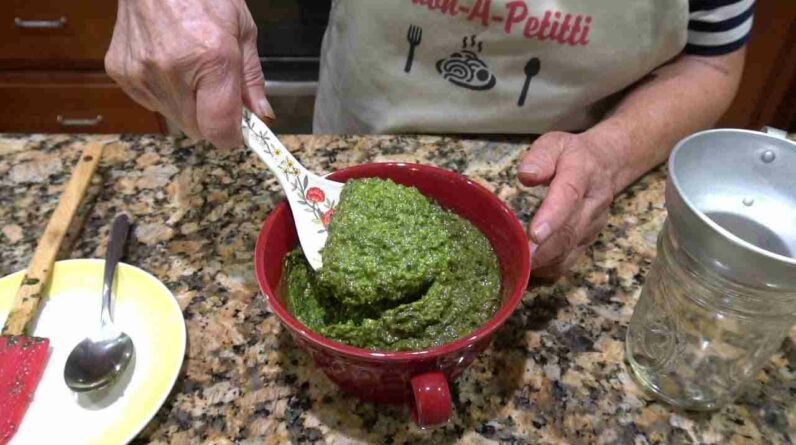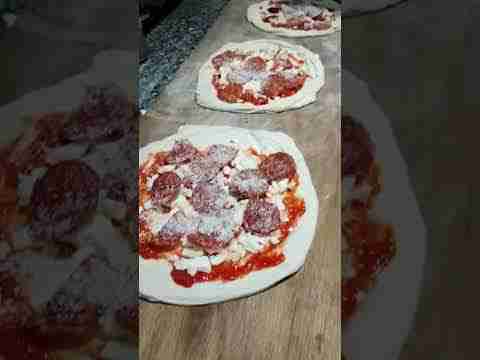4 Delicious Recipes Using Parmigiano Reggiano Cheese
Parmigiano Reggiano cheese, often referred to as the “King of Cheeses,” is a beloved ingredient in many classic Italian dishes. This hard, granular cheese is made from cow’s milk and has a distinctive nutty and salty flavor that adds depth and richness to any recipe. Whether grated over pasta, shaved into salads, or simply enjoyed on its own, Parmigiano Reggiano is a versatile cheese that can be used in a variety of dishes.

If you’re looking to incorporate more Parmigiano Reggiano into your cooking, you’re in luck! In this article, we’ll share four delicious recipes that showcase the unique flavor of this beloved cheese. From classic pasta dishes to innovative appetizers, these recipes are sure to impress your family and friends. So grab a block of Parmigiano Reggiano and get ready to cook up a storm!
Key Takeaways
- Parmigiano Reggiano is a versatile cheese that can be used in a variety of dishes.
- This article features four delicious recipes that showcase the unique flavor of Parmigiano Reggiano.
- Whether you’re a classic pasta lover or an adventurous cook, there’s a recipe for everyone to enjoy.
Understanding Parmigiano Reggiano
History and Origin
Parmigiano Reggiano, also known as Parmesan cheese, is a hard, granular cheese that originated in Italy. It is named after the regions of Parma and Reggio Emilia, where it has been produced for over 800 years. The cheese is made from cow’s milk and is aged for at least 12 months, but some varieties can be aged for up to 36 months.
Production Process
The production of Parmigiano Reggiano cheese is a highly regulated process that must follow strict guidelines to ensure quality and authenticity. The milk used to make the cheese must come from cows that are fed a specific diet and raised in a specific region of Italy. The cheese is made using traditional methods, including the use of natural rennet to coagulate the milk and the use of copper vats to heat and curdle the milk.
After the cheese is formed into wheels, it is immersed in a brine solution for several weeks to enhance the flavor and texture. The cheese is then aged for a minimum of 12 months, during which time it develops its characteristic nutty, savory flavor and crumbly texture.
Nutritional Value
Parmigiano Reggiano cheese is a good source of protein, calcium, and phosphorus. It is also high in fat and calories, so it should be consumed in moderation as part of a balanced diet. One ounce of Parmigiano Reggiano cheese contains approximately 110 calories, 7 grams of protein, and 9 grams of fat.
In addition to its nutritional value, Parmigiano Reggiano cheese is also rich in flavor and can be used in a variety of recipes. Its nutty, savory taste pairs well with a range of ingredients, making it a versatile ingredient in the kitchen.
Classic Parmigiano Reggiano Recipes

Parmigiano Reggiano cheese, also known as “the King of Cheeses,” is a staple ingredient in Italian cuisine. Its nutty and salty flavor makes it a versatile ingredient that can be used in a variety of dishes. Here are three classic recipes that use Parmigiano Reggiano cheese to add depth and flavor.
Parmigiano Reggiano Risotto
Risotto is a classic Italian dish that is creamy, rich, and comforting. Parmigiano Reggiano cheese is the perfect addition to this dish, adding a nutty and salty flavor that complements the creamy rice. To make Parmigiano Reggiano risotto, you will need:
- 1 cup Arborio rice
- 4 cups chicken or vegetable broth
- 1 cup grated Parmigiano Reggiano cheese
- 1/2 cup white wine
- 1 small onion, finely chopped
- 2 cloves garlic, minced
- 2 tablespoons butter
- Salt and pepper to taste
In a large saucepan, heat the broth over medium heat. In another large saucepan, melt the butter over medium heat. Add the onion and garlic and sauté until soft and translucent. Add the rice and stir until it is coated in the butter. Add the white wine and stir until it is absorbed.
Add one ladle of broth to the rice and stir until it is absorbed. Repeat this process, adding one ladle of broth at a time, until the rice is cooked through and the risotto is creamy. Stir in the grated Parmigiano Reggiano cheese and season with salt and pepper to taste.
Eggplant Parmigiana with Parmigiano Reggiano
Eggplant Parmigiana, also known as Eggplant Parmesan, is a classic Italian dish that is hearty and satisfying. Parmigiano Reggiano cheese is used to add flavor and depth to this dish. To make Eggplant Parmigiana with Parmigiano Reggiano, you will need:
- 2 large eggplants, sliced into rounds
- 1 cup all-purpose flour
- 3 eggs, beaten
- 2 cups breadcrumbs
- 1 cup grated Parmigiano Reggiano cheese
- 2 cups tomato sauce
- 2 cups shredded mozzarella cheese
- Salt and pepper to taste
Preheat the oven to 375°F. Dip the eggplant slices in the flour, then in the beaten eggs, and finally in the breadcrumbs mixed with grated Parmigiano Reggiano cheese. Place the eggplant slices on a baking sheet and bake for 20-25 minutes or until golden brown.
In a 9×13 inch baking dish, spread a layer of tomato sauce. Add a layer of eggplant slices, followed by a layer of shredded mozzarella cheese. Repeat the layers until all the ingredients are used up. Bake for 30-35 minutes or until the cheese is melted and bubbly.
Frittatas are a classic Italian dish that are quick and easy to make. Parmigiano Reggiano cheese adds a nutty and salty flavor to this dish. To make Parmigiano Reggiano frittata, you will need:
- 6 eggs
- 1/4 cup grated Parmigiano Reggiano cheese
- 1/4 cup milk
- 1 small onion, finely chopped
- 1 small zucchini, chopped
- 1 small red bell pepper, chopped
- 2 tablespoons olive oil
- Salt and pepper to taste
Preheat the oven to 350°F. In a large bowl, whisk together the eggs, Parmigiano Reggiano cheese, milk, salt, and pepper. In a large skillet, heat the olive oil over medium-high heat. Add the onion, zucchini, and red bell pepper and sauté until soft and translucent.
Pour the egg mixture over the vegetables in the skillet. Cook for 3-4 minutes or until the edges start to set. Transfer the skillet to the oven and bake for 10-12 minutes or until the frittata is set and golden brown. Serve hot or cold.
Innovative Parmigiano Reggiano Dishes
Parmigiano Reggiano is a versatile cheese that can be used in a variety of dishes. Here are three innovative recipes that showcase the unique flavor and texture of this cheese.
Parmigiano Reggiano Ice Cream
Parmigiano Reggiano ice cream may sound unusual, but it’s a delicious and unexpected dessert that will leave your guests impressed. This recipe combines the salty, nutty flavor of Parmigiano Reggiano with the sweetness of cream and sugar. The result is a creamy, rich ice cream that is perfect for a special occasion.
To make Parmigiano Reggiano ice cream, you will need:
- 2 cups heavy cream
- 1 cup whole milk
- 1 cup grated Parmigiano Reggiano cheese
- 3/4 cup sugar
- 6 egg yolks
In a medium saucepan, combine the heavy cream, milk, and Parmigiano Reggiano. Heat over medium heat until the cheese is melted and the mixture is hot, but not boiling. In a separate bowl, whisk together the sugar and egg yolks until pale and thick. Slowly pour the hot cream mixture into the egg mixture, whisking constantly. Return the mixture to the saucepan and cook over low heat, stirring constantly, until it thickens and coats the back of a spoon. Strain the mixture through a fine-mesh sieve into a bowl and chill in the refrigerator for at least 2 hours. Churn the mixture in an ice cream maker according to the manufacturer’s instructions.
Parmigiano Reggiano Stuffed Mushrooms
Parmigiano Reggiano stuffed mushrooms are a savory appetizer that will be the talk of your next dinner party. This recipe combines the earthy flavor of mushrooms with the sharp, salty flavor of Parmigiano Reggiano. The result is a delicious and satisfying bite-sized snack.
To make Parmigiano Reggiano stuffed mushrooms, you will need:
- 24 large mushrooms
- 1 cup grated Parmigiano Reggiano cheese
- 1/2 cup breadcrumbs
- 1/4 cup chopped fresh parsley
- 2 cloves garlic, minced
- 2 tablespoons olive oil
- salt and pepper to taste
Preheat the oven to 375°F. Remove the stems from the mushrooms and chop them finely. In a bowl, combine the chopped mushroom stems, Parmigiano Reggiano, breadcrumbs, parsley, garlic, olive oil, salt, and pepper. Stuff the mushroom caps with the mixture and place them on a baking sheet. Bake for 20-25 minutes, or until the mushrooms are tender and the filling is golden brown.
Parmigiano Reggiano Crisps
Parmigiano Reggiano crisps are a simple and elegant appetizer that will impress your guests. This recipe uses only one ingredient – Parmigiano Reggiano – and transforms it into a crispy, crunchy snack that pairs perfectly with a glass of wine.
To make Parmigiano Reggiano crisps, you will need:
- 1 cup grated Parmigiano Reggiano cheese
Preheat the oven to 400°F. Line a baking sheet with parchment paper. Spoon the grated Parmigiano Reggiano onto the baking sheet in small mounds, leaving space between each mound. Flatten each mound slightly with the back of a spoon. Bake for 5-7 minutes, or until the cheese is melted and golden brown. Remove from the oven and let cool for a few minutes before serving.
Cooking Techniques with Parmigiano Reggiano
Grating and Shaving Techniques
When it comes to using Parmigiano Reggiano cheese in recipes, grating and shaving are two common techniques that can enhance the flavor and texture of dishes. Grating Parmigiano Reggiano cheese is a great way to add a rich and nutty flavor to pasta dishes, soups, and salads. To achieve the best results, it is recommended to use a fine grater or a microplane to create a fine and fluffy texture that can easily melt into the dish.
Shaving Parmigiano Reggiano cheese is another popular technique that can add a bold and savory flavor to dishes. This technique is commonly used to garnish salads, pizzas, and pasta dishes. To achieve the best results, it is recommended to use a vegetable peeler or a cheese slicer to create thin and delicate shavings that can easily melt in the mouth.
Melting and Emulsifying Tips
Melting and emulsifying Parmigiano Reggiano cheese can be a bit tricky due to its high fat content and low moisture. However, with the right technique, it can add a creamy and velvety texture to dishes. When melting Parmigiano Reggiano cheese, it is important to use low heat and stir constantly to prevent the cheese from burning or separating.
Emulsifying Parmigiano Reggiano cheese is a technique commonly used in sauces and dressings to create a smooth and creamy texture. To achieve the best results, it is recommended to use a whisk or an immersion blender to incorporate the cheese into the other ingredients slowly. Adding the cheese too quickly can cause the sauce or dressing to become lumpy or grainy.
Overall, Parmigiano Reggiano cheese is a versatile ingredient that can be used in a variety of dishes and cooking techniques. By mastering these techniques, home cooks can elevate their dishes and create bold and flavorful meals.

Pairing and Serving Ideas
Wine Pairings for Parmigiano Reggiano
Parmigiano Reggiano cheese pairs well with a variety of wines. For a classic pairing, try a full-bodied red wine such as Chianti or Barolo. The tannins in the wine complement the nutty flavor of the cheese. For a white wine option, consider a crisp and acidic Sauvignon Blanc or Pinot Grigio. These wines cut through the richness of the cheese and refresh the palate.
Accompaniments and Garnishes
Parmigiano Reggiano cheese is a versatile ingredient that can be used in a variety of dishes. It pairs well with a variety of fruits, nuts, and herbs. Here are a few suggestions for accompaniments and garnishes:
- Fresh figs: The sweetness of fresh figs pairs well with the nutty flavor of Parmigiano Reggiano.
- Walnuts: The earthy flavor of walnuts complements the nuttiness of the cheese.
- Prosciutto: The salty flavor of prosciutto contrasts with the richness of the cheese.
- Balsamic vinegar: A drizzle of balsamic vinegar over Parmigiano Reggiano adds a tangy sweetness to the dish.
- Arugula: The peppery flavor of arugula pairs well with the nutty flavor of the cheese.
When serving Parmigiano Reggiano as a standalone dish, consider shaving it into thin slices using a vegetable peeler. This allows the cheese to melt in your mouth and fully release its flavor. Additionally, serving the cheese at room temperature allows its full flavor to develop.
Storing and Preservation
When it comes to storing and preserving Parmigiano Reggiano cheese, there are a few important things to keep in mind to ensure that the cheese maintains its quality and flavor.
Firstly, it is important to store Parmigiano Reggiano cheese in the refrigerator. The ideal temperature is between 35-45°F (2-7°C), and the cheese should be stored in the original packaging or wrapped tightly in plastic wrap or aluminum foil to prevent it from drying out.
It is also important to keep the cheese away from strong-smelling foods, as it can absorb their flavors. Additionally, Parmigiano Reggiano cheese should be stored separately from other types of cheese to prevent cross-contamination.
If you have a large piece of Parmigiano Reggiano cheese, it is recommended to cut it into smaller pieces and store them separately. This will make it easier to use and ensure that the cheese stays fresh.
Finally, if you have leftover Parmigiano Reggiano cheese, it can be grated and stored in an airtight container in the refrigerator or freezer. This will help to preserve its flavor and texture, and make it easier to use in future recipes.
Frequently Asked Questions
What are some simple recipes that include Parmigiano Reggiano as a key ingredient?
Parmigiano Reggiano cheese can be used in a variety of simple recipes. One easy option is to grate the cheese over a simple pasta dish, such as spaghetti with olive oil and garlic. Another option is to sprinkle Parmigiano Reggiano over roasted vegetables, such as asparagus or Brussels sprouts. The cheese can also be used as a topping for salads or added to soups and stews for added depth of flavor.
Can you suggest four pasta dishes that feature Parmigiano Reggiano cheese?
Certainly! Here are four pasta dishes that prominently feature Parmigiano Reggiano cheese:
- Spaghetti alla Carbonara – a classic Roman dish made with spaghetti, eggs, pancetta, and Parmigiano Reggiano cheese.
- Fettuccine Alfredo – a creamy pasta dish made with butter, heavy cream, and Parmigiano Reggiano cheese.
- Linguine with Clams – a simple pasta dish made with linguine, clams, garlic, white wine, and Parmigiano Reggiano cheese.
- Pesto Pasta – a flavorful pasta dish made with basil pesto, pine nuts, Parmigiano Reggiano cheese, and pasta.
What are some creative ways to incorporate Parmigiano Reggiano into chicken dishes?
Parmigiano Reggiano cheese can add delicious flavor to chicken dishes. One idea is to make a Parmigiano Reggiano crust for chicken breasts by mixing grated cheese with breadcrumbs and herbs. Another option is to stuff chicken breasts with a mixture of Parmigiano Reggiano cheese, spinach, and garlic. The cheese can also be added to chicken soups or stews for added depth of flavor.
How can Parmigiano Reggiano be used in vegetarian recipes, such as those with aubergine?
Parmigiano Reggiano cheese can be a great addition to vegetarian recipes. For example, it can be used as a topping for roasted aubergine slices or added to vegetarian lasagna. The cheese can also be used to make a creamy risotto with mushrooms and peas or added to a vegetable gratin.
What are the best methods for incorporating Parmigiano Reggiano rinds into cooking?
Parmigiano Reggiano rinds can be used to add flavor to soups and stews. Simply add the rinds to the pot and let them simmer with the other ingredients. The rinds can also be used to flavor pasta sauces or broths.

How should Parmigiano Reggiano be stored to maximize its shelf life?
Parmigiano Reggiano cheese should be stored in the refrigerator, wrapped in parchment paper or wax paper to allow it to breathe. It should not be stored in plastic wrap, as this can cause the cheese to sweat and spoil. The cheese can also be grated and frozen for later use.









